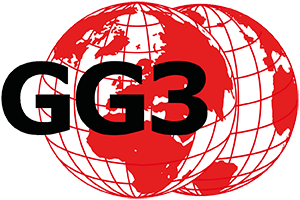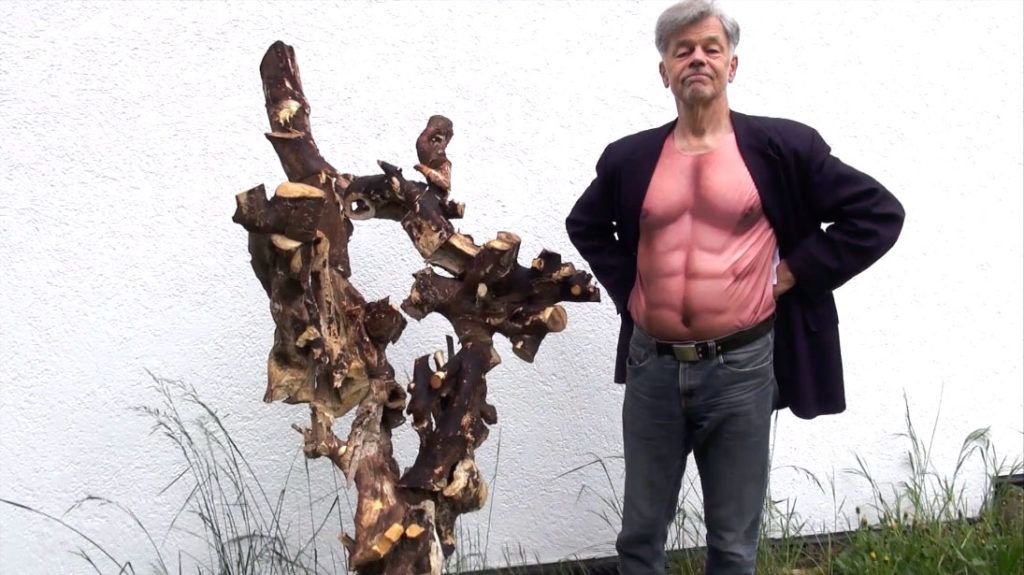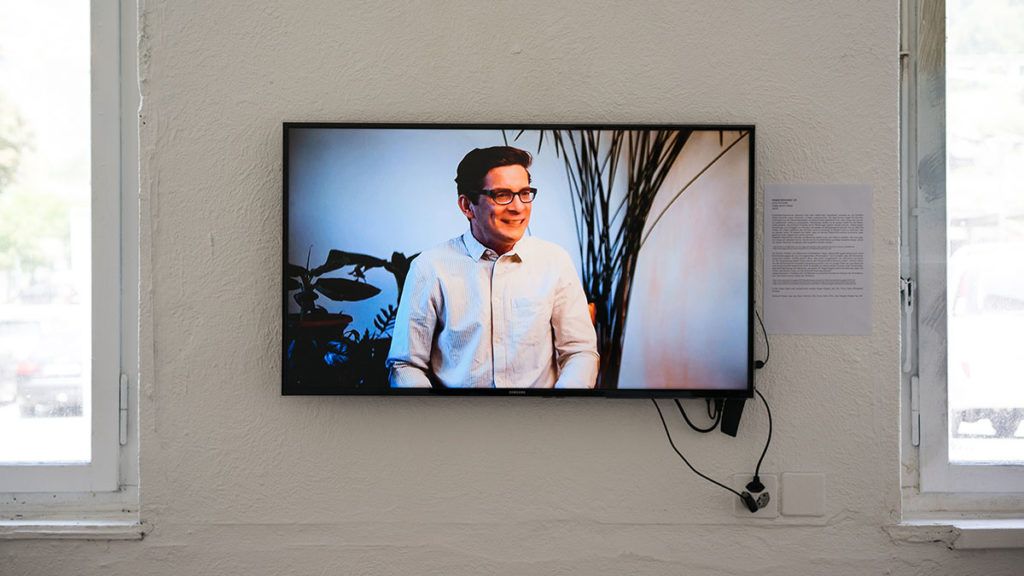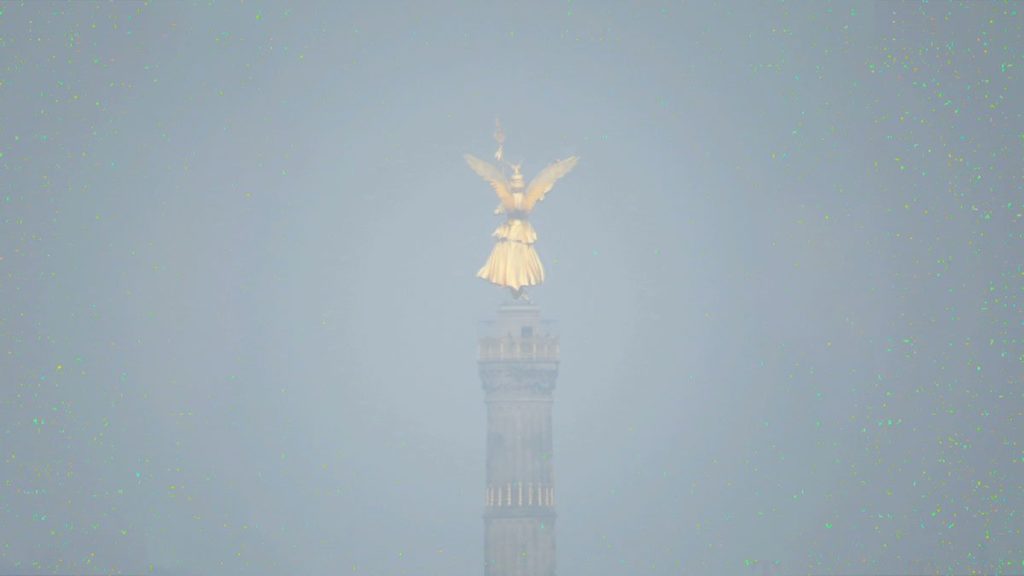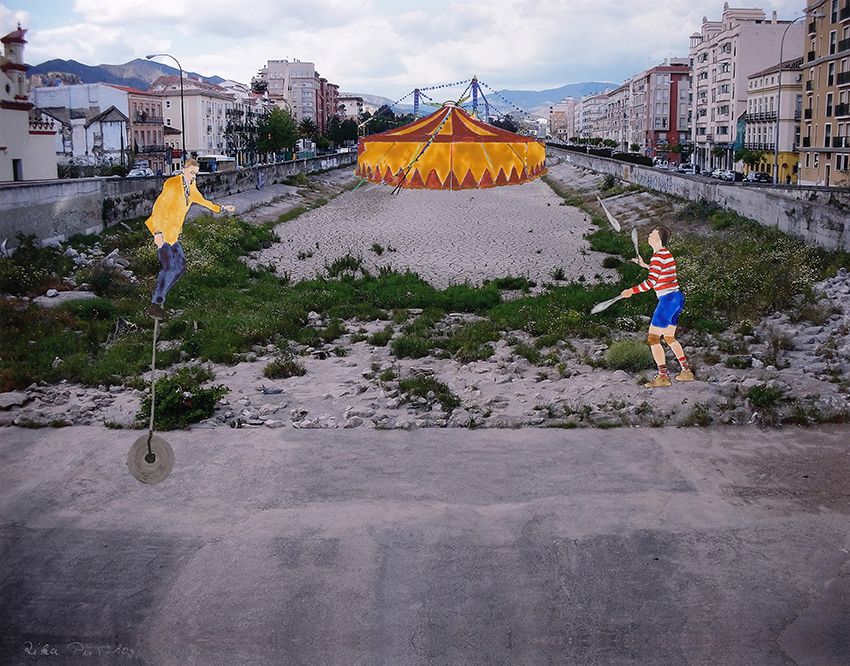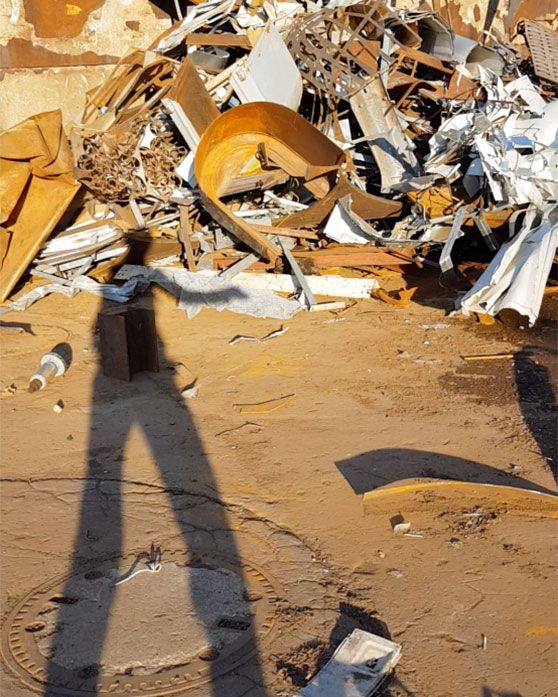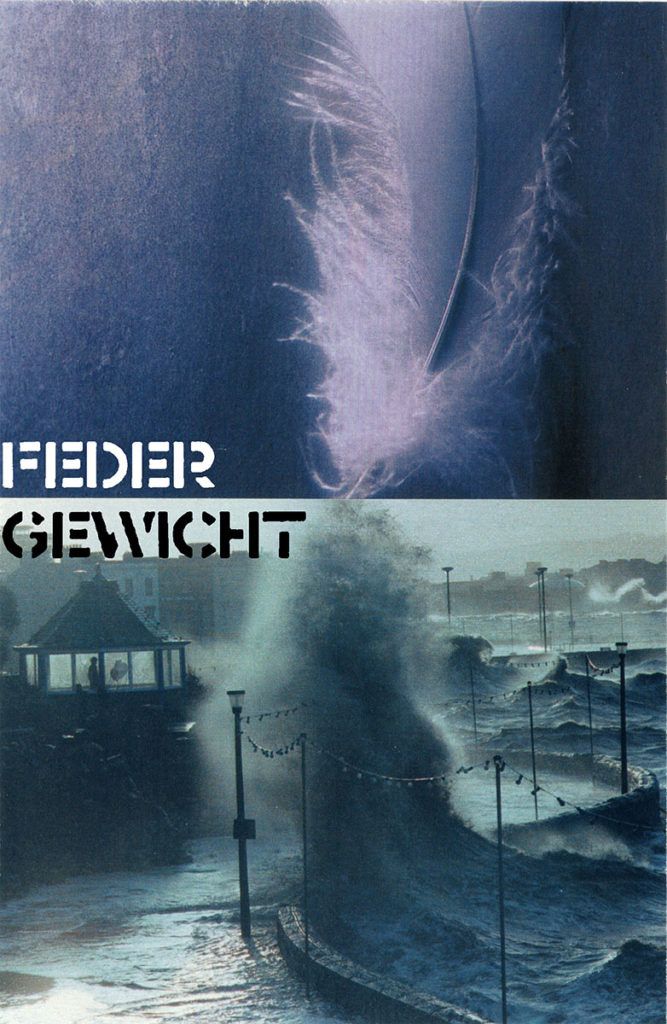May 15 – June 19, 2020
Artists
Francesco Gioacchini, Julia Schicker, Lioba von den Driesch, Manja Dessel, Mari Terauchi, Martin Zellerhoff, Rika Pütthoff-Glinka, Rosa Schmidt, Stephan Groß.
Link to text and program of the exhibition, dates with online chats with the artists
 Francesco Gioacchini: Statement (Video 2:26 min.)
Francesco Gioacchini: Statement (Video 2:26 min.)
Oil price dropping is a preparatory drawing for a “site-specific” installation. Some flowers covered with a black liquid are hung on colorful ropes. Some oil drips from them into the shells below.When the price of oil falls, it means that the world economy is in “danger.” We are always more concerned about the “health” of the economy than the environment. In my installation, the color of the flowers is obscured by the black of the oil that drips from them. The impact of these emissions on climate change has not yet convinced people to review their needs, and the sound of an oil drop makes more noise than a falling tree.
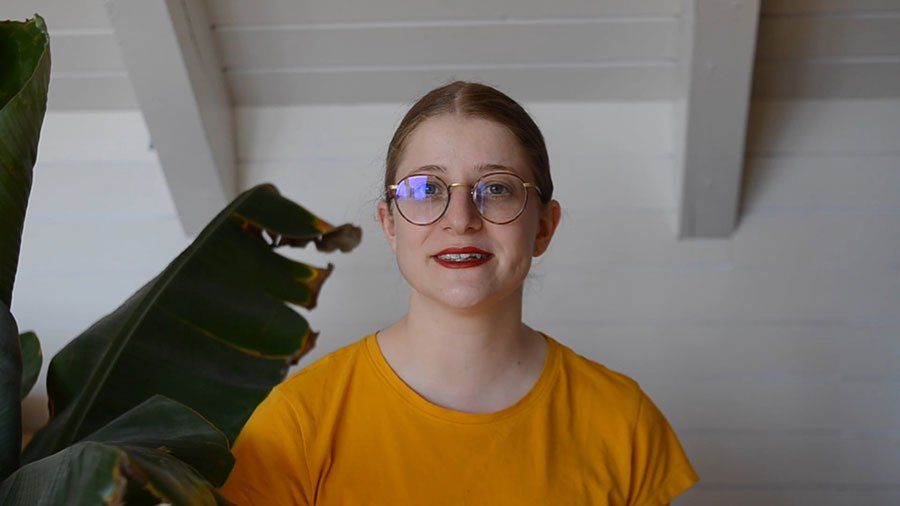 Julia Schicker: Statement (Video 2:30 Min.)
Julia Schicker: Statement (Video 2:30 Min.)
The work deals with the responsibility of politics when it comes to climate change. Without political advances, it will be impossible to save the climate. However, certain politicians deliberately spread untruths in order to maintain their position of power. The video work attempts to take up the argumentation and rhetoric of such a politician and to draw other conclusions from the lines of argumentation.
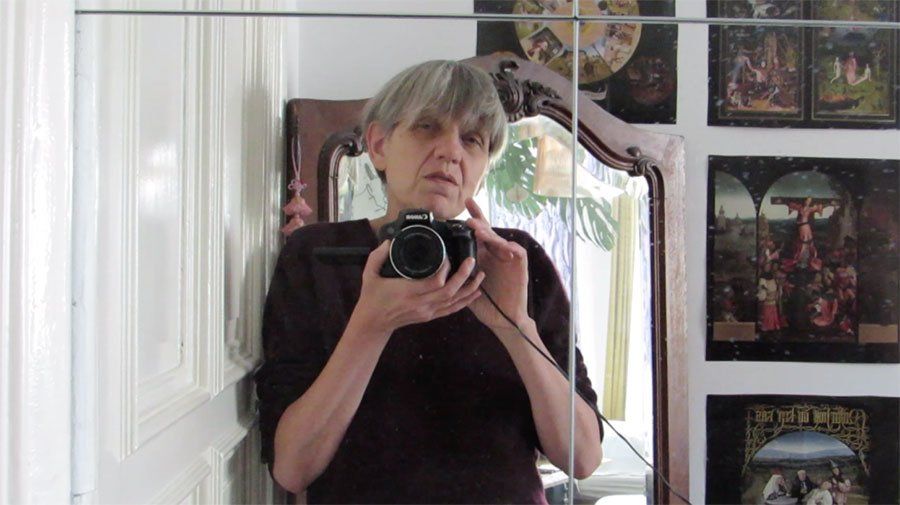 Lioba von den Driesch: Statement (Video 2:18 Min.)
Lioba von den Driesch: Statement (Video 2:18 Min.)
Climate change to go – this idea is fascinating in a similar way to post-apocalyptic sci-fi worlds, or the slogan “Berlin is poor but sexy”. At the Siegessäule in Berlin, this mixture of feelings manifests itself: backward-looking, full of trivial longings, suffocating, dangerous, loud – and somehow also political. The goddess of victory shines in the sun and strides inexorably into the hazy nothingness. She is the tour guide – we follow. “Vamos a la Playa” (Let’s Go to the Beach) by Righeira was a disco hit in 1983, but the song’s lyrics about the explosion of an atomic bomb and the end of the Mediterranean Sea received little attention. The ideal of the easy lifestyle – to go – is still valid against better knowledge.
 Manja Dessel: Enough is Enough, 2019 (Video 0:15 Min.)
Manja Dessel: Enough is Enough, 2019 (Video 0:15 Min.)Hanging installation, shopping plastic bags, up to 30m
Hattingen-Ruhr, Germany
I see shopping bags with their immense plastic consumption as a characteristic of consumer frenzy, compulsion, consumer addiction. Inspired by my travels to Tibet and Nepal and the ubiquitous prayer flags there, I tied the shopping bags equally. I was animated by the Buddhist idea of moderation. “Overindulgence in abundance” – Without giving up our accustomed comforts, the future will show consequences.
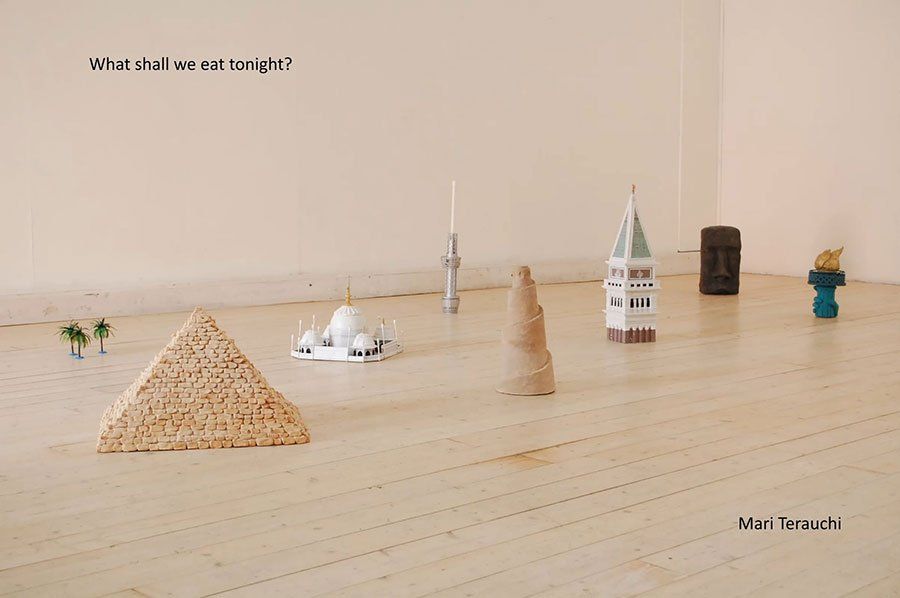 Mari Terauchi: Statement (Video 2:52 min.)
Mari Terauchi: Statement (Video 2:52 min.)
People worry about natural disasters when they see them on TV. However, their concern fades out with the end of the news and is then replaced by their daily lives. “OK, now turn off the TV, everyone! Time for dinner!” “What should we eat tonight?”; “What should I wear for the party tomorrow?”
People feel that our planet has become warmer. But climate change is gradually advancing, and people are able to adapt to the new temperatures. But by the time they become aware of the effects not on TV, but before their eyes, it will be too late, and the adjustment to the new temperature is not endless. It is not necessary to threaten people every day by pointing out problems, but it is also useful to raise the issues from time to time.
This is my explanation of this work from 2010. After 10 years, the situation is still the same. But after 10 years, I see that many scientists say that climate change is a lie or it happens because of the sun or because of the cycle of the earth. I have no idea who is right, but scientists also work for corporations and their government. They can manipulate the data or even make mistakes. In the next decade, we may hear the main cause of climate change. Even if it is due to the nature of the earth, it is not wrong to reduce the poison in the air or in our bodies. This insouciance is not just happening in the face of climate change. Those affected will fade away when they return to their real lives. What we can do is raise the issue from time to time.
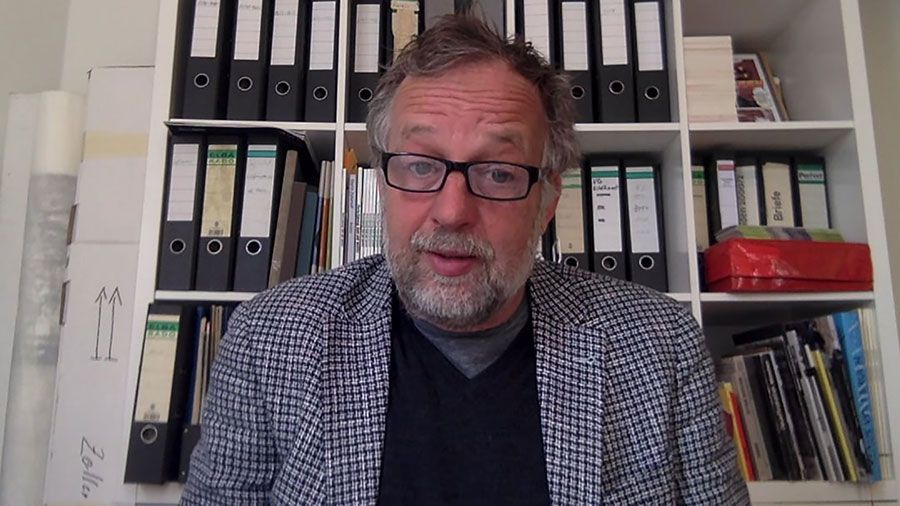 Martin Zellerhoff: Statement (Video 0:20 Min.)
Martin Zellerhoff: Statement (Video 0:20 Min.)
“Cosmos and Demian, after Joseph Beuys,” two damaged replicas of the Eiffel Tower support each other.
In response to climate change, international conferences emerged for which thousands of people jet around the world trying to save our world. To me it seems like an ineffectual attempt.
A cheap Eiffel Tower replica is a typical souvenir from such a trip.
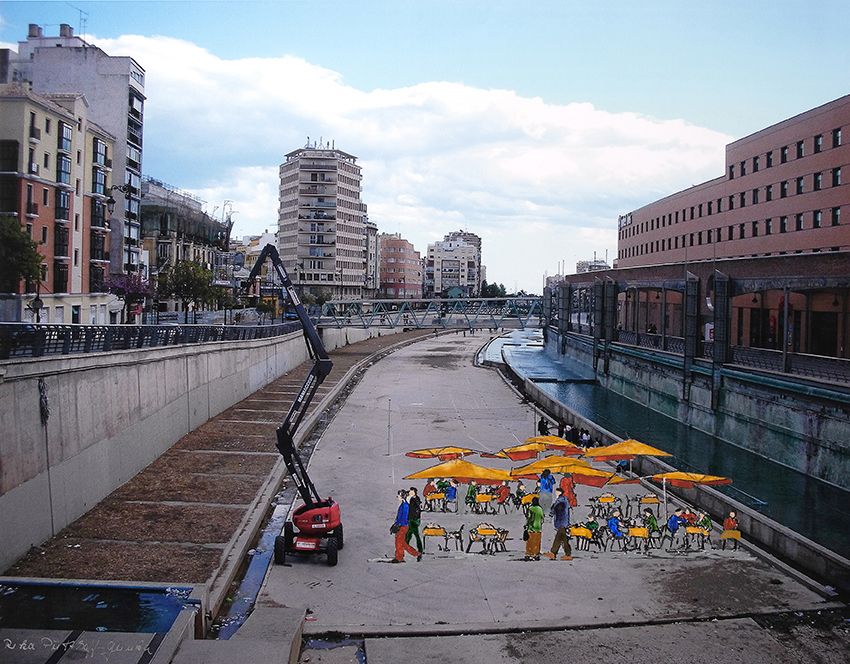
Rika Pütthoff-Glinka: Desiccated 1-3, 2019
Photo work, collage, painting, 70 x 100 cm
Dortmund, Germany
“A few hundred meters west of the historic center of Malaga flows the Rio Guadalmedina. Better said, what is left of him. Because of the diversion of many streams in the hinterland, the once proud Rio runs today mostly only as a trickle through the wide riverbed”(Internet).
The Spaniards see the advantage of having better access to both parts of the old city through the almost dried up river and use the former course of the river as parkland.
I have added to the Southern European view of environmental damage caused by strollers, cafe-goers, circus people, and other interiors, thus “taking it to the extreme.”
Rika Pütthoff-Glinka: Statement (Audio, 1:55 min.)
On 19 June at 7 pm
Rosa Schmidt: Filmed performative intervention “INDIGO HILLS / SETZUNGSFLIESSEN”, 2020
The project imagines a surface of the planet fissured by the mining of raw materials from extraction pits for the future of SMART SOCIETIES technologized through: It tests with the means of a performative experimental arrangement the future forms of physical ground contact, ground adhesion, and standing in the age of the geo-economically speculated Arctic melt, respectively liquefies the techno-consumerist arrogance, comfort and greed of the present, dancing on an ICE FIRE in the nautical twilight – until natures’ rhythms take over again.
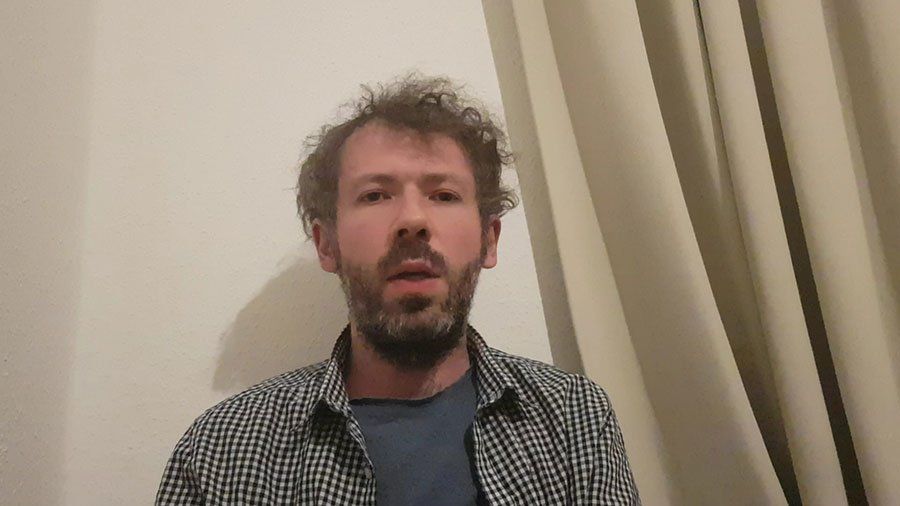 Stephan Groß: Statement (Video 3:58 Min.)
Stephan Groß: Statement (Video 3:58 Min.)
The poster artwork “Featherweight” shows the image of a feather above that of a storm surge. The layout, which divides the term, also divides it figuratively into its components: The spring and the weight.
The feather depicted in the work represents the familiar and cherished comfort, the storm tide the weighty dangers that arise from our lifestyle. Anyone who believes that the fight against climate change is a featherweight in the sense of an easy opponent who can be defeated in passing is fatally mistaken. The consequences are severe, and the global increase in catastrophic weather events is just one aspect.
Next dates:
Artists meet guests online
on alternating dates, moderated by Tom Albrecht
In each case from 18:00 to max. 18:30
Preparation from 5 pm.
We use the very privacy friendly open source jitsy meet.
Please from 18.5. click on the link with the artist name below.
Only participants with images and speech will be admitted.
For PC, please use Chrome or Firefox or Safari browsers.
Large screens are an advantage.
For smartphone, tablet must be previously installed the app Jitsy Meet from the store, for Android privacy sensitive from the F-Droid store.
Headset recommended or earphone with microphone
Camera and microphone must be activated.
Martin Zellerhoff 18.5.
Julia Schicker 26.5.
Rosa Schmidt 28.5.
Francesco Gioachini 29.5.
Mari Terauchi 2.6 We had a stimulating and exciting conversation. What does climate change have to do with Corona? Where are parallels, where are differences? What can art say about this? What do we learn from Corona for climate change?
Lioba von den Driesch 4.6.
Manja Dessel 5.6.
Stephan Groß 15.6.
12.6., Video lecture for “Climate change to go (19:21 min.)
Christian Löwe, Federal Environment Agency
| Born in 1965, holds a degree in forestry from the University of Bremen, and has been a research associate at the Federal Environment Agency since 1993, currently working in the area of “Digitization and Environmental Protection, E-Government”. | |
Central: Work and research focus:
|
|
| Lecture short text
The permanent overstepping of planetary boundaries not only overtaxes the climate and the environment, but also leads economically, socially and culturally into a dead end. More and more people are becoming aware that the prevailing forms of economic activity, consumption patterns and lifestyles in modern societies are already causing the economic and social costs of environmental degradation to rise immeasurably, and will thus severely restrict the scope for a good, successful life for present and, above all, future generations. Germany must set out on the path to a sustainable society. Environmental policy is thus increasingly becoming an extended social and cultural policy. But what does Germany need to achieve a culture for sustainability? And what new impulses can arise from an increased interplay between digitality and art for a cultural dynamization of the socio-ecological transformation? Does this result in starting points for a cultural (political) economic stimulus program that can lead to new forms of aestheticizing innovation as well as social experiments for a digital culture of sustainability? |
|
6/19, 7 pm Finissage
“Post-exhibition reading” via public group video chat with the exhibition artists, guests, and the GG3 team. Please have drinks available for toasting.
Link to the chat is available here from 18:45.
